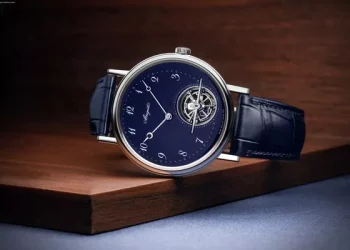Rolex watches are renowned for their precision, reliability, and self-winding capabilities. The remarkable engineering behind these timepieces ensures that they can operate without manual winding in most scenarios. However, there are factors that affect the power reserve of a Rolex watch. In this article, we will explore the dynamics of Rolex power reserves, discuss the variables that impact how long a Rolex can run without winding, and provide valuable insights for watch enthusiasts.
Understanding Power Reserve
Power reserve refers to the duration a watch can function autonomously without additional winding or movement. Rolex watches typically have an average power reserve ranging from 48 to 70 hours, depending on the specific model and movement. This means that once fully wound, a Rolex watch will continue to keep time accurately for the designated period before it stops.
Self-Winding Mechanism
Rolex watches employ automatic self-winding mechanisms known as Perpetual movements. These movements harness energy from the natural motion of the wearer’s wrist, translating it into mechanical power to wind the watch’s mainspring. As long as the watch is worn regularly and subject to normal wrist movements, the self-winding mechanism ensures that the watch remains powered.
Factors Affecting Power Reserve Duration
Several factors influence the length of time a Rolex watch can run without winding:
a. Activity Level: The frequency and intensity of physical activity can impact the power reserve. More active wearers who move their wrists extensively may generate more energy, resulting in prolonged power reserve durations.
b. Wearing Patterns: Consistently wearing your Rolex watch throughout the day allows the self-winding mechanism to remain engaged and maintain optimal power reserve levels. Extended periods of non-use can lead to a decrease in power reserve.
c. Complications and Features: Certain complications, such as chronographs or additional functions, can consume more energy, reducing the power reserve. Additionally, features like a date display or a second time zone may require extra power to operate.
Power Reserve Indicator
Some Rolex models feature a power reserve indicator, which provides a visual indication of the remaining stored energy. This feature allows wearers to monitor the power reserve level and take appropriate actions to wind the watch if necessary. It is important to note that not all Rolex watches come equipped with this feature, so it is advisable to refer to the specific model’s documentation or consult an authorized Rolex dealer for accurate information.
Manual Winding and Restarting
If a Rolex watch has stopped due to depleted power reserve, manual winding can be employed to restart the timepiece. By gently rotating the crown clockwise approximately 30 to 40 times, the mainspring can be wound, providing initial power to the watch. Once restarted, normal wrist movements will engage the self-winding mechanism again, ensuring continuous operation without manual intervention.
Conclusion
Rolex watches are designed to provide exceptional reliability and convenience, thanks to their self-winding capabilities. With an average power reserve ranging from 48 to 70 hours, these timepieces can continue to function autonomously for extended periods without manual winding. The duration of the power reserve is influenced by factors such as activity level, wearing patterns, complications, and features of the specific Rolex model. Monitoring the power reserve through a power reserve indicator, when available, helps in managing the watch’s winding requirements effectively. In the event of a depleted power reserve, manual winding can be performed to restart the watch and engage the self-winding mechanism. Understanding the power reserve dynamics of your Rolex watch ensures you can enjoy its seamless operation and uninterrupted timekeeping, exemplifying the craftsmanship and ingenuity behind these remarkable timepieces.
Related topics:





























